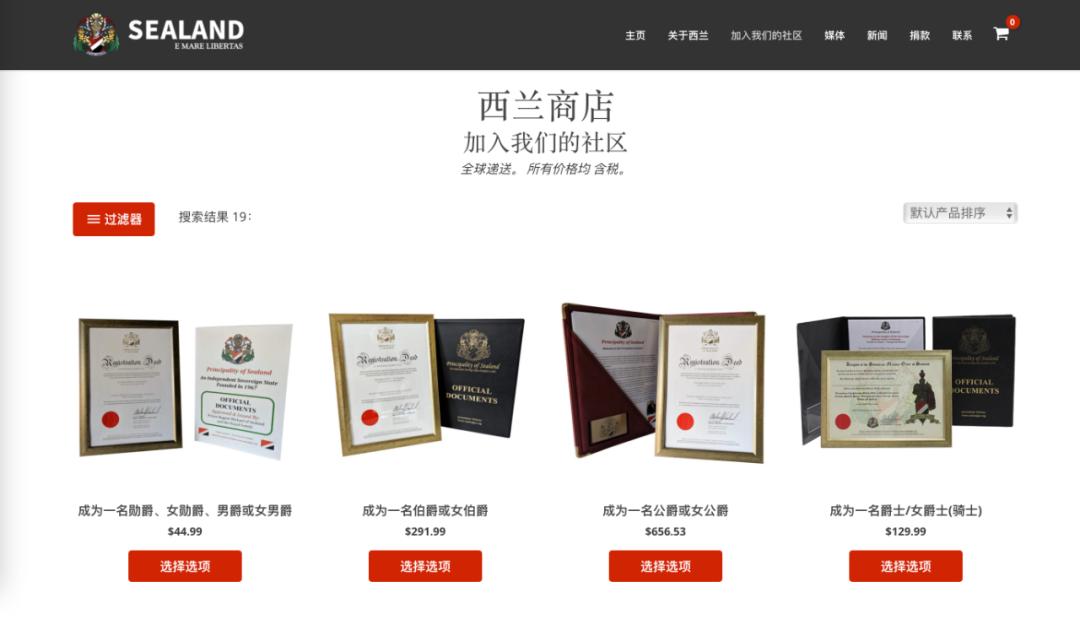Interpretation by Economists —— Ten Highlights of Government Work Report
On March 5th, Li Keqiang, Premier of the State Council of the People’s Republic of China expounded the general requirements for economic and social development in 2021 in his government work report. On the whole, the report presents three characteristics:
First, the policy has returned to normalization, and the economic operation targets including growth, prices and employment have basically returned to the pre-epidemic level during the year. The policy implication lies in diluting the goal of "quantity" of economic growth and guiding all aspects to concentrate on promoting reform and innovation and promoting high-quality development.
Second, the policy is closer to the actual needs. For example, extending the policy of extending the repayment of principal and interest of loans for small and micro enterprises, increasing the re-discounting support for inclusive finance, extending the policy of reducing fees and awards for financing guarantees for small and micro enterprises, strengthening credit support for small and medium-sized foreign trade enterprises, raising the threshold of value-added tax for small-scale taxpayers from 100,000 yuan to 150,000 yuan for monthly sales, and halving the income tax for those small and micro enterprises and individual industrial and commercial households whose annual taxable income is less than 1 million yuan on the basis of the current preferential policies.
Third, the macro policy emphasizes continuity, stability and sustainability. Policy continuity has been maintained in solving the outstanding housing problems in big cities and standardizing the development of the third pillar endowment insurance.
Specifically, there are 10 points worth focusing on. Grasping these key points is of great guiding significance for doing a good job in the whole year.
1. The proactive fiscal policy is more sustainable by improving quality and efficiency.
The proactive fiscal policy is still strong, and the policy focus is adapted to the adjustment of economic development goals. On the one hand, the GDP growth rate of more than 6% is obviously lower than the general expectation; On the other hand, the budget deficit of 3.2% and the arrangement of new local government special debt of 3.65 trillion yuan all exceeded the general expectation of the outside world to some extent. Under the tone of returning to normal, such a set of expected differences actually reflects the structural changes of economic development goals in 2021 and the corresponding adjustment of the focus of fiscal policy. The focus of fiscal policy will shift from directly stimulating economic growth through infrastructure investment to public consumption and services with higher efficiency, more flexible structure and more prominent focus.
Specific performance, first, promote innovation and promote the high-quality development of the real economy. It is mainly manifested in increasing investment in science, technology and education, adding and deducting R&D expenses of enterprises, introducing tax incentives and subsidy mechanisms, and encouraging R&D and innovation of enterprises. The second is to optimize and implement the tax reduction policy and continue to help market players enhance their vitality. The third is to support the expansion of domestic demand and tap the potential of the domestic market. In 2021, financial funds will continue to expand effective investment and play an active role in promoting regional coordination of major projects, "two new and one heavy" construction, infrastructure shortcomings, information networks, modern service systems and related projects that are conducive to safeguarding and improving people’s livelihood. The fourth is to promote the full implementation of the rural revitalization strategy and improve the supply guarantee capacity of grain and important agricultural products. Fifth, vigorously support pollution prevention and ecological construction, and do a solid job in peak carbon dioxide emissions and carbon neutrality.
2. A prudent monetary policy should balance the needs of economic recovery and risk prevention.
The report pointed out that monetary policy should be flexible, accurate, reasonable and moderate; The report also makes it clear that the relationship between economic recovery and risk prevention should be properly handled. In 2021, domestic economic growth will return to the potential output level, so the goal of annual money supply and social financing growth rate is to basically match the nominal economic growth.
The report pointed out that the real loan interest rate will be further reduced. It is unlikely that LPR will be further lowered this year, but there is room to further reduce the financing cost of the real economy through LPR reform.
The report pointed out that the policy of extending the repayment of principal and interest for loans to small and micro enterprises will be continued. This shows that the application time of the policy of delaying the repayment of principal and interest will continue to be extended. Domestic macroeconomic growth has returned to the pre-epidemic level, but at the micro level, some enterprises still face certain difficulties. In the first two months of this year, the default scale of domestic corporate bonds exceeded 25 billion yuan, significantly higher than last year and the year before. For some small and micro enterprises, the operating pressure is still relatively high, so the monetary policy tools that go directly to the real economy will continue to be used. This is also the embodiment that macro policies continue to bail out market players, maintain necessary support and not make a sharp turn.
The report proposes to continue to guide the financial system to make profits to the real economy. In 2020, the financial system will make a profit of 1.5 trillion yuan to the real economy, mainly through four ways: first, deepen the LPR reform and guide the decline of loan interest rates to make a profit of 590 billion yuan; Second, refinancing and rediscounting support the issuance of preferential loan interest rates to benefit 46 billion yuan; Third, the bond interest rate will be reduced to 120 billion yuan for bond issuers; Fourth, two monetary policy tools that go directly to the real economy make a profit of 120 billion yuan. In 2021, the interest rate of corporate bond financing is higher than that in 2020, which makes it difficult to make profits. The other three ways can still continue to benefit the real economy in 2021.
3. Strengthen financial support entities and strictly observe the bottom line of financial risks.
The report makes it clear that it is necessary to continue the policy of extending the repayment of principal and interest of loans to small and micro enterprises in Pratt & Whitney, and increase the efforts of re-discounting loans to support inclusive finance. The extension of the two direct tools of monetary policy is mainly based on the fact that although the current economy is in the process of recovery, there are still certain uncertainties in the domestic and international economic environment, and market players such as small and micro enterprises still need to "give another hand" to recover their vitality and enhance their vitality. However, because the current main purpose is not "emergency", the intensity and rhythm may change compared with last year, depending on the macroeconomic trend in the second quarter and the second half of the year and the operation of related enterprises.
The report sets the growth target of large commercial banks’ loans to benefit small and micro enterprises at more than 30% this year, while the growth target of large commercial banks’ loans to benefit small and micro enterprises proposed in last year’s Government Work Report is more than 40%. In fact, in 2019, the central and regulatory authorities set a target of more than 30% for the loan growth of large commercial banks to benefit small and micro enterprises. Under the special background of the COVID-19 epidemic in 2020, in order to support small and micro enterprises to tide over the difficulties, the central government and the regulatory authorities have raised the requirements of banking institutions for the growth target of loans for small and micro enterprises. With the basic control of the epidemic situation in China, the economy is improving steadily, and the business recovery of small and micro enterprises is uneven, and there are structural differences inside. This year, the target of loan growth for large commercial banks to benefit small and micro enterprises is set at more than 30%, which is a return to normal management.
In response to the disposal of financial risks, the report emphasizes that the responsibilities of all parties should be compacted and the bottom line of no systemic risks should be firmly held. Since 2014, the regulatory authorities have successively established evaluation and identification mechanisms for global systemically important banks and domestic systemically important banks, further consolidating China’s financial risk regulatory framework. After the establishment and improvement of global systemically important banks and domestic systemically important banks, it is suggested that all parts of China can also start to establish corresponding local systemically important banks’ supervision frameworks in the next step. Local banks have long been rooted in local areas, and they are the main force of credit to support major local projects and serve private enterprises, small and micro enterprises and "agriculture, rural areas and farmers". Some relatively large local banks, especially provincial corporate banks, may cause major regional financial risks once problems occur. Compared with large state-owned banks, the shortcomings of local banks such as imperfect corporate governance and imperfect risk control system are more obvious, and the probability of future risks is far higher than that of large banks. After bringing local important banks into special supervision, local governments and local financial supervision departments should not only further strengthen supervision and risk monitoring and early warning of relevant banks, but also urge them to continuously improve their internal governance; At the same time, within the scope permitted by the policy, we can also concentrate local superior resources and give greater support to local important banks in promoting domestic and overseas listing, allocating powerful countries with shareholders and accelerating capital replenishment in accordance with the principle of equal contribution.
4. Policies support scientific and technological innovation, and the transformation of manufacturing industry is intensified.
There are more highlights in the report on developing and supporting scientific and technological innovation. First, it is clearly pointed out that we must rely on innovation to promote the high-quality development of the real economy and combine innovation with the real economy and high-quality development; The second is to raise the ability of scientific and technological innovation to the height of national strategy, and plan to promote "scientific and technological innovation 2030— Major projects "; The third is to give the growth rate of basic research for the first time — — The expenditure on basic research at the central level increased by 10.6%; Fourth, support for manufacturing enterprises is further strengthened, including increasing the deduction ratio of manufacturing enterprises to 100%, fully refunding the incremental VAT tax allowance for advanced manufacturing enterprises on a monthly basis, increasing the proportion of manufacturing loans and expanding investment in manufacturing equipment renewal and technological transformation; The fifth is to determine industrial Internet, 5G network and Gigabit optical network as the key development directions in 2021; Sixth, it is proposed to carry forward the spirit of artisans and improve the quality of China’s manufacturing by meticulous work.
The above highlights show that the government attaches more importance to scientific and technological innovation, especially manufacturing innovation than before. Scientific and technological innovation is the first driving force to lead the transformation and development, and the core of scientific and technological innovation is research and development. Compared with the manufacturing powers, China’s R&D investment is still insufficient at this stage, and the proportion of R&D in GDP is currently around 2.2%, which still has obvious room for improvement compared with the United States’ 2.8%, Japan’s 3.3% and Germany’s 3.1%, and the transformation rate of scientific and technological achievements in China is also low. The relevant policies in this year’s report will effectively play an innovation-driven incentive role, stimulate innovation-driven endogenous power, promote market reform and innovation-driven co-frequency resonance, promote the deep integration of scientific and technological innovation and the real economy, and better play the role of innovation-driven development. At the same time, the spirit of craftsmanship and the wording of improving quality also reflect the government’s determination to change the current status of China’s manufacturing products in the middle and low end of the world.
5. Expanding domestic demand has become the strategic basis for economic recovery.
Compared with the previous two years, the importance of expanding domestic demand has been further strengthened under the new development pattern. This report has raised the expansion of domestic demand to a strategic level, highlighting the importance of persisting in expanding domestic demand for stabilizing the current economy.
For expanding domestic demand, the highlight of the report lies in expanding demand closely around improving people’s livelihood, promoting the effective combination of consumption and investment, and achieving a higher level of dynamic balance between supply and demand, rather than simply forcing demand through flooding and adding more leverage. When deploying stability and expanding consumption, we first emphasize "increasing residents’ income through multiple channels", grasping the key point of promoting the double cycle, and also matching the previous goal of "steady growth of residents’ income in 2021". Secondly, it is mentioned that "expanding county and township consumption" shows that rural villages and towns are also an important part of China’s domestic demand market. Thirdly, it is proposed for the first time that "unreasonable restrictions on second-hand car trading should be lifted" in automobile consumption, which indicates that the second-hand car market will play an important role in promoting automobile consumption in China. Finally, under the severe impact of the epidemic in 2020, the online consumption pattern occupies a larger space in the report than before, which also shows that the government’s support for online consumption will be further increased.
In terms of expanding effective investment, "it is planned to arrange 3.65 trillion yuan of special bonds for local governments" is consistent with the statement in the report that the macro policy should continue to bail out market players, maintain necessary support, not make a sharp turn, adjust and improve in time according to changes in the situation, and further consolidate the economic fundamentals.
6. Ensure the housing needs of the masses and solve the housing problem in big cities.
The main tone of housing policy this year is to improve the relationship between housing supply and demand. On the basis of "staying in houses without speculation" and "three stables", while curbing speculative demand through the "three red lines" and housing loan concentration management system, we will increase land supply, arrange special funds, focus on construction, etc., and increase housing supply, especially for the just-needed housing supply of farmers in cities and the supply of rental housing in big cities, so as to promote the healthy development of the real estate market. To solve the problem of insufficient housing supply in big cities, we should first give priority to the land market (supply), increase the land supply of rental housing in big cities, including developing idle land in stock and improving land use efficiency. The current real estate control policy is more targeted than before.
At present, high housing prices in big cities have set a high threshold for young people to enter cities. If they are not alleviated, there may be a staged "reverse urbanization" situation, which will have a negative impact on employment, production and consumption in cities. The report proposes to standardize the development of the long-term rental market, reduce the burden of taxes and fees on rental housing, and do our utmost to help new citizens and young people to alleviate housing difficulties. Last year, the problem of mine explosion in long-term rental apartments was largely due to the management and operation of middlemen, so in the short term, it is necessary to standardize the housing rental market order; In the long run, cities should be encouraged to increase various types of rental housing, promote the "equal right to rent and purchase" and promote the healthy development of the rental housing market. At present, the housing rental population in China is about 150 million, and the rental population in big cities accounts for about one third, most of which are migrant workers and young people. Therefore, it is necessary to speed up the development of the housing rental market and solve the housing problem in some big cities with large net inflow of population, high housing prices and large rental demand gap.
7, optimize the regional economic layout, new urbanization to a new height.
The report proposes to further promote the new urbanization strategy with people as the core, accelerate the urbanization of agricultural transfer population, increase the urbanization rate of permanent population to 65%, and develop and expand urban agglomerations and metropolitan areas. In the future, the transition from rural population to urban population will become the main theme of population circulation in the process of new urbanization. According to the target of urbanization rate of permanent population, it is estimated that the urban population will increase by about 10 million to 11 million every year during the Tenth Five-Year Plan period, and the urbanization rate of registered population may rise faster than that of permanent population, and the flow of urban and rural labor factors will be accelerated. Under the background of market-oriented allocation of factors, the restrictions on the realization of farmers’ land property rights in the past will gradually loosen, rural land reform will pave the way for farmers to transfer to urban household registration, and it is expected to establish and improve a unified urban-rural construction land market in the future. The new land acquisition system will raise the compensation standard and solve the resettlement problems of land-expropriated farmers, including housing, social security, employment and other issues, ensure farmers’ long-term livelihood, contribute to the further transfer of rural labor force, increase housing demand in the process of new urbanization, and expand the construction of urban agglomerations and metropolitan areas.
The report proposes to optimize the regional economic layout and promote coordinated regional development. In-depth implementation of major regional strategies, regional coordinated development strategies, and main functional area strategies, and construction of a high-quality regional economic layout and land space support system. It is estimated that the Yangtze River Delta will still be in the leading echelon by 2025, and the net inflow of urban population will reach 13.5 million. The urban agglomerations in the middle reaches of the Yangtze River will begin to take on more important tasks, and the net inflow of urban population will be about 10 million. Both the Pearl River Delta and Chengdu-Chongqing regions will carry about 8 million new urban population, ranking relatively in the front of the second echelon. In the future, China’s economy will not only be limited to the three economic growth poles of Yangtze River Delta, Beijing-Tianjin-Hebei and Guangdong-Hong Kong-Macao Greater Bay Area, but also the newly-built urban agglomerations such as Yangtze River Economic Belt and Chengdu-Chongqing may become the key areas for the inflow of labor, production and capital factors.
8. From "getting rid of poverty and increasing income" to "fully implementing the rural revitalization strategy"
Compared with last year, the report’s formulation of agricultural and rural work has many new ideas, is more systematic and has more strategic significance. The report puts forward that "fully implementing the rural revitalization strategy, promoting the stable development of agriculture and increasing farmers’ income" is not only to raise the agricultural and rural issues to the height of national strategy, but also to systematically and comprehensively solve the fundamental problems of China’s agricultural and rural development.
In terms of rural reform, the report clarifies the major and institutional arrangements concerning the basic rural management system and land contract relationship that are generally concerned by the peasants. It puts forward the requirements for deepening the reform of rural state-owned and collective ownership management forms such as supply and marketing cooperatives, collective forest rights, state-owned forest farms and agricultural reclamation. In rural construction, first of all, it points out the direction for the acquisition of construction funds. From last year’s "increasing investment in special bonds" to this year’s "increasing the proportion of land transfer income used in agriculture and rural areas", the source of funds for rural construction has changed from financing to revitalizing rural assets. Secondly, "strengthening rural basic public services and public infrastructure construction, and promoting the integrated development of urban and rural areas within the county", its focus is no longer "improving farmers’ production and living conditions" as proposed last year, but only meeting the promotion and improvement of traditional agricultural production methods. If we combine the formulation of "improving urban and rural circulation system, speeding up e-commerce and express delivery into rural areas, and expanding consumption in counties and townships" in expanding domestic demand, we can vaguely see the determination of the central government to rely on urbanization to develop new rural economy such as service industry.
9. Develop a green and low-carbon economy and promote sustainable economic and social development.
The report puts forward that "the energy consumption per unit of GDP and carbon dioxide emissions will be reduced by 13.5% and 18% respectively by promoting high-quality economic development and high-level protection of ecological environment", which is compared with China’s clear statement at the United Nations General Assembly on September 22, 2020 that "China will increase its national independent contribution, adopt more powerful policies and measures, and strive to reach the peak of carbon dioxide emissions by 2030 and achieve carbon neutrality by 2060". Peak carbon dioxide emissions’s carbon dioxide emissions will peak before 2030 and then gradually decrease; Carbon neutrality means that by 2060, all the carbon dioxide emitted will be offset by planting trees, saving energy and reducing emissions. This also means that China’s economy and society will usher in a comprehensive low-carbon change.
Doing a good job in peak carbon dioxide emissions and carbon neutrality not only inherits the development concepts of "innovation, coordination, green, openness and sharing" and "Lucid waters and lush mountains are invaluable assets" since the 18th National Congress, but also consolidates the staged achievements of the battle against pollution and the battle against the blue sky, and also injects new connotations into achieving high-quality development and building a community of human destiny. The goal of "peak carbon dioxide emissions" and "carbon neutrality" in the report will help China to strengthen the construction of ecological civilization, accelerate the adjustment and optimization of industrial structure and energy structure, and realize a green and low-carbon production and lifestyle at an early date.
Therefore, at the macro-institutional level, it is necessary to work out an action plan for carbon emission peaking before 2030 and support qualified places to take the lead in peaking; In terms of national industrial policy, we should speed up the adjustment and optimization of industrial structure and energy structure, vigorously develop renewable energy, and promote the peak of coal consumption as soon as possible; In terms of financial market construction, it is necessary to speed up the construction of a national market for energy use rights and carbon emission rights.
In order to realize peak carbon dioxide emissions in 2030, non-fossil energy will become the main force of energy increment for the first time, which will bring profound changes to China’s economic and social development. It is estimated that from 2020— In 2030, China’s total energy consumption will increase by 20%; The proportion of non-fossil energy in primary energy will increase from 16.4% to 26.0%, among which photovoltaic and wind power have the greatest potential; The proportion of fossil energy will drop from 83.6% to 74.0%. At the same time, in terms of carbon trading and green economy, new energy vehicles, low-carbon technologies and clean energy materials have broad opportunities.
10. Deepen the promotion of key areas and stimulate the vitality of market players by means of reform.
The report puts forward more specific and clear requirements from four aspects: further transforming government functions, promoting the reduction of production and operation costs of enterprises by reform methods, promoting the common development of diversified ownership economies, and deepening the reform of fiscal, taxation and financial systems.
First of all, handle the relationship between government and market well, and promote a better combination of effective market and promising government. By transforming government functions, we will do a better job in the service functions such as registration, operation, approval and cancellation of enterprises, and strive to create an international business environment. At the same time, strengthen effective supervision, classify and refine supervision policies, use the Internet and digital to enhance supervision capabilities, and promote the expansion of the coverage of electronic licenses.
Secondly, reform a number of non-tax revenue systems to effectively reduce the cost of enterprises. Mainly from energy, transportation, telecommunications, rent and other aspects. In terms of energy, open the electricity market, clean up unreasonable price increases and reduce the general electricity price. In terms of transportation costs, the port construction fee will be cancelled, and the standard for airlines of the Civil Aviation Development Fund will be reduced by 20%. In terms of telecommunications, the average tariff of broadband and private lines for small and medium-sized enterprises will be reduced by 10% on the basis of a 15% reduction in 2020. Encourage local governments to reduce or exempt rents for small and micro enterprises and individual industrial and commercial households that lease state-owned enterprises.
Thirdly, promote the common development of multi-ownership economy and emphasize equal treatment. It is necessary to strengthen and improve state-owned capital and state-owned enterprises, continue to deepen the reform of mixed ownership of state-owned enterprises, and break down various barriers to the development of private enterprises. In particular, it is proposed to promote entrepreneurship, support the innovation and development of platform enterprises, strengthen anti-monopoly and prevent the disorderly expansion of capital.
Finally, it is to deepen the reform of the fiscal and taxation financial system and support the high-quality development of the market. In terms of finance and taxation, we will implement the reform plan for the division of powers and expenditures between the central and local governments. In terms of financing channels, we should supplement the capital of small and medium-sized banks, enhance their ability to serve small and medium-sized enterprises, promote the reform of classification and accounting of policy banks, and enhance insurance protection and service functions. It is emphasized that strengthening the supervision of financial holding companies and financial technology corresponds to the above-mentioned anti-monopoly and prevention of disorderly expansion of capital.
The report mobilizes all the positive factors that can be mobilized, promotes reform, stimulates the vitality of market players and social creativity to a greater extent, and solves the problem of insufficient development imbalance by means of development. In the coming period, various reform rules and supporting measures may be gradually implemented, which will further enhance the vitality of market players.
(The author Lian Ping is the chief economist and dean of the research institute of Zhixin Investment. Also participating in the writing of this article are: Liu Tao Deng Zhichao Wang Hao Liu Hong Luo Han Ma Hong Zhang Bingwen Guo Jianfeng Huang Chunhua Dong Chengxi Source: Economic Daily-China Economic Net)









